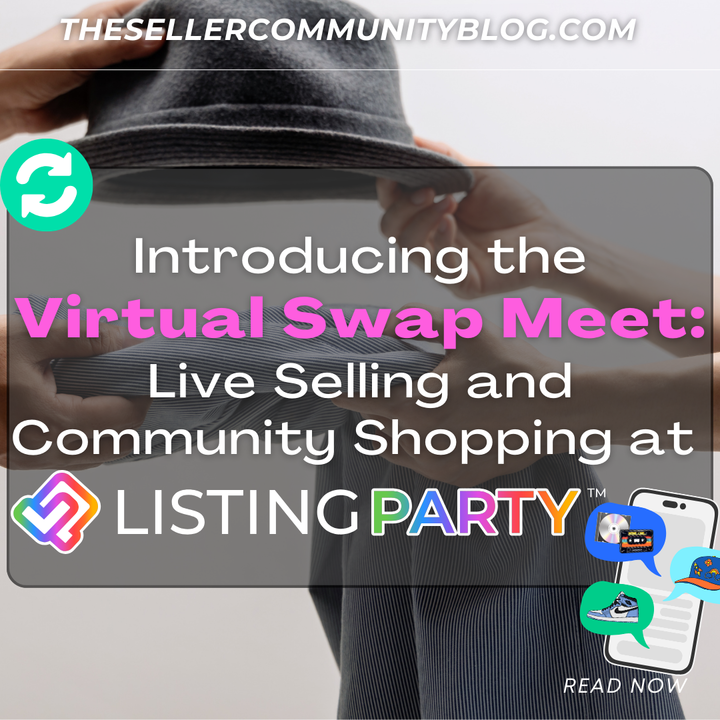BY Natalie Gale
Originally published on https://www.thegoodtrade.com/features/selling-used-clothes-online
One Person’s Trash, Another Person’s Treasure
These days, it seems as if everyone from your cool younger cousins to the ladies from your mom’s book club are selling used clothes online. Before I became focused on thrifting myself, I was in the same place as you are—excited to declutter and make some cash but in need of help getting started.
With 80 percent of donated clothing going to landfills, finding a new home for your used clothes is also great for the planet. Here are six quick and easy steps to help get you started with selling your clothes and accessories online. You can do this!
(If you’re looking to buy, The Good Trade has a guide for that, too! Here’s what to look out for.)
1. Pick Your Platforms
Where Can I Sell My Clothes Online?
While there are many places to buy and sell clothing, no two platforms are exactly alike.
Tradesy and The RealReal are for luxury only. Poshmark and eBay tend to have the most traffic, but you’ll pay higher commissions on sales. ThredUP is the easiest because you can send your clothes in, and the company will sell them for you, but you’ll make the least. Etsy is fun for handmade and one-of-a-kind items. And then there’s Depop and Mercari—all of which are great platforms to sell just about anything in your closet. If you’re hoping to sell affordable vintage and thrift pieces, you can check out additional platforms here.
Don’t feel the pressure to sell on multiple platforms, but if you want to go for it, you can use a multi-platform manager like List Perfectly.
2. Be Picky—And Realistic
What Items Should I Sell?
Chances are you once liked the clothes you’re selling—that’s how they ended up in your closet! But one “bad” piece can scare away customers for good. Think about it; if one of your items is tattered and stained, potential customers may question the quality and condition of all the pieces you’re selling.
While it’s great to curate the selection of items you’re selling, it is not necessary as long as the aesthetic in which you photograph them is cohesive (more on that in tip #3).
Take a look at the list below. If your garment falls into one of these categories, it’s probably going to be difficult to sell on fashion-specific sites. If the item is unique or vintage, it may be a better fit for Depop or eBay, as long as it’s still in good condition.
-
The garment is damaged
Look for tears, stains, or pilling. If the item is damaged, you must photograph and describe the damages, or you may not be paid for the item. -
The garment is older, but not yet considered vintage
If your garment is an outdated style, it’s probably best not to sell it. For example, it may be more challenging to sell peplum, skater dresses/skirts, or sheer blouses. -
The garment is unbranded
While you may have a cool vintage or unique boutique items to sell, unbranded clothing can be challenging. Customers can’t try your clothes on before they buy them, so typically, they’re more inclined to buy brands they’re familiar with.
If your item doesn’t fall into the above categories but instead meets one or more of the following criteria, it’s probably good to sell:
-
New With Tags / Box or “Like New” condition
Customers love new or “ like new” items they can get for less money than they’d spend in the store (especially in a pandemic!). -
Current styles (still available in stores)
Customers are always looking for the latest styles, or a “classic” pieces they’d otherwise go to the store to buy. Some items that are always in demand include Madewell apparel, Chelsea boots, utilitarian-style jumpsuits, loose/straight jeans, & athleisure sets. -
Brand name vs. boutique
On most resale platforms, customers will not be able to try on your item, nor can they return it if it doesn’t fit. For that reason, buyers prefer brand-name clothing, where they are familiar with sizing and quality. - One-of-a-kind novelty items & vintage
While brand names are typically the easiest to sell, customers also love one-of-a-kind vintage pieces they can’t find anywhere else. Bring the magic of the thrift shop to them by listing your specialty pieces.
3. Perfect Your Pictures
How should I photograph my items?
Good news! Your phone’s camera and a big white poster board or white wall are all you need to get the perfect picture. Feel free to model your clothes, but never feel pressured to do so—a simple shot against a white background is just fine (check out Vivian Phan for inspiration).
You can also hang your garment against a white wall using a hanger and scotch tape (or a nail if that works). Then, make sure you get the following five shots: front, back, detail, detail, and tag.
Be sure to use natural light, and get the whole item in the shot (not cut off). Smooth out wrinkles, or use a steamer for garments that have deeper creases. Avoid using stock or brand photos, and stay away from using the flash or filters that might change the color of the garment. And of course—no blurry pics!
4. Price It Right
How much can I expect to make?
Everyone loves a good deal, especially when it comes to used clothes. In a world where there are thousands of places to shop, a good price is the number one most important thing to convince someone to buy your clothes.
If your goal is to sell quickly, I recommend pricing your item close to 75 percent off the retail price (50 percent off minimum). I know you probably want to make more, but know that, the higher your list price, the slower the sale cycle.
5. Shipping
My item sold! Now what?
Congratulations, sustaina-babe, your item sold! While the shipping process may seem intimidating, it’s exactly like riding a bike—once you get the hang of it, it’s simple.
The exact shipping process does depend on the platform you use, but shipping with USPS is a standard option on platforms like Poshmark and Depop.
Here is how it works:
-
Package the item with any box you have at home, or get a free Priority Shipping box from USPS. I highly recommend including a small thank you note for the customer—this really counts when it comes time for them to write a review!
-
The platform will typically email you a pre-paid USPS shipping label to print out and tape to your box. Print that label at home or pay a modest fee to print at your local UPS. Then drop off your box at your local USPS. You won’t be charged since the label is pre-paid. Pro tip: You can ship USPS labels from UPS!
6. Get That Money, Honey
How do I get paid?
Your funds will be available after your customer receives their item. Typically, customers have 24 to 48 hours to confirm the purchase or report a problem before the sale is final, and then your funds are released.
For most platforms, the funds go into an in-app account that you can then transfer to your bank. You can also use the money to shop on the platform.
Remember, shopping on the platform supports another seller like you, and buying used is more sustainable than buying new!
Originally published on https://www.thegoodtrade.com/features/selling-used-clothes-online



